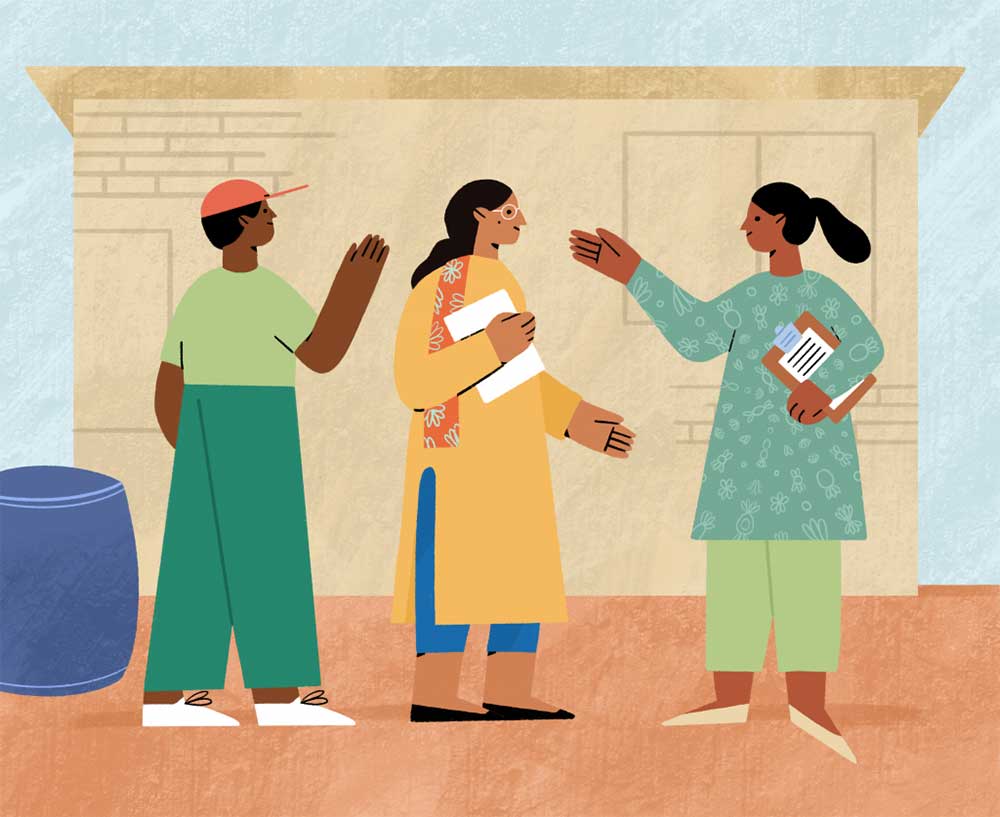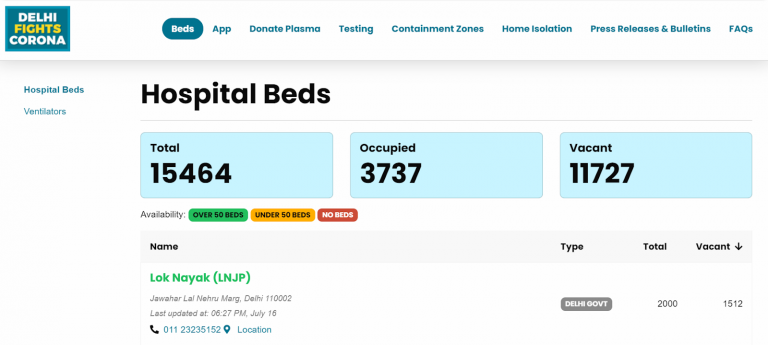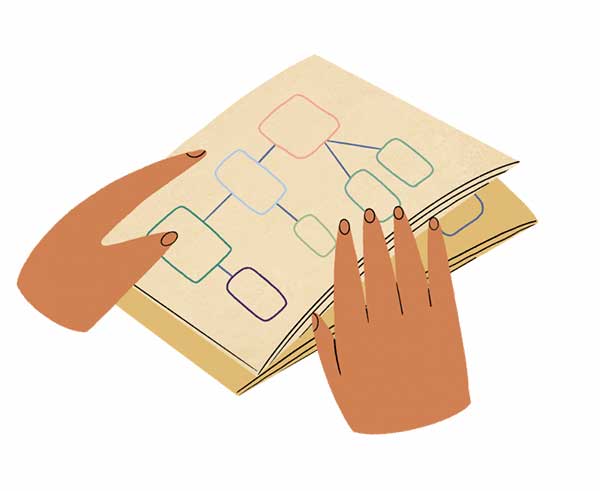Monitoring case study: Delhi government’s COVID response
A monitoring system for the Delhi government’s early COVID-19 response enabled better care for patients and proactive policy to contain the spread of the disease.

Background
In May 2020, COVID-19 cases in Delhi, India were rising rapidly. Delhi’s government had been using a largely manual data system as part of its response to COVID-19: different teams maintained separate spreadsheets tracking patients and the availability of medical facilities. This system had worked when cases were low; however, as cases surged, it became difficult to track patients across different spreadsheets. The system was also prone to human error since it relied on manual data entry and management. This further limited the government’s ability to use data rapidly to answer key questions around infection hotspots and hospital bed availability.
Decision
The Delhi government needed accurate and real-time data and analytics on COVID-19 patients and medical facilities in order to effectively provide care to patients and contain further disease transmission. Specifically, the data would be used in the following ways:
- Informing direct actions. For example, which recovered patients should be called to seek plasma donations for convalescent plasma therapy?
- Enabling better monitoring of COVID-19 care in the city. For example, what percentage of patients have not been contacted within a day of diagnosis? Have asymptomatic patients been assigned to home isolation? What percentage of a districts’ COVID positive patients are uncontactable?
- Providing inputs for key policy decisions. For example, what proportion of hospital beds are occupied? What proportion of admitted patients are on ventilators?
To this end, IDinsight supported the Delhi government in developing a new COVID-19 monitoring system that would streamline data collection, expedite data analytics, and provide timely, decision-relevant information.
Approach
1. Identifying data needs
We looked through the data already being collected to identify key indicators. We also spoke to government officials to understand data needs that were not being met by the existing system.
2. Setting up data pipeline
We mapped out the monitoring system, from identifying who would enter the data to which charts would be automatically produced for decision-makers.
3. Creating the monitoring system
IDinsight, in collaboration with Dimagi (a social enterprise specializing in technology solutions), developed a monitoring system based on the data pipeline.
An iterative and user-focused process
Throughout this process, we were in discussions with the users of the data – state leadership as well as district-level officials – to understand what they needed from the data and the challenges they faced. This enabled us to iteratively improve the portal’s capabilities so that it captured all relevant information and was easy to use.
Results
The data management portal has helped the Delhi government manage the COVID-19 crisis in the city:
- The portal reduced slippage in patient management and made it easier for the government to monitor the status of each and every COVID-19 patient in Delhi.
- The portal enabled government policies to increase the percentage of patients who are reached by district officials for contact tracing.
- The portal gave rise to a dashboard that displays the availability of hospital beds to the public, which has reduced citizens’ anxiety about insufficient hospital capacity.

- The portal has offered officials easily accessible data, eliminating the need to pull data from different sources.
- The portal served as a template for the government to build its own data system through the NIC and generate a sustainable, long-term solution to COVD-19 data management.
Guide
Not sure where to go from here? Use our guide to frame a question and match it to the right method.
Monitoring systems?
About monitoring systems and how to build your own
Create your theory of change
Use our drag-and-drop tool to create a theory of change diagram











